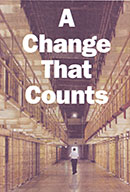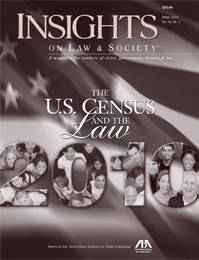Census count of prison populations distorts redistricting, but has little impact on the distribution of federal funding. Democracy suffers while some falsely claim funding impact.
by Aleks Kajstura,
April 2, 2010
Despite our best efforts, media stories keep on appearing that claim that the Census Bureau’s prison count means a huge windfall of federal funds to towns that host prisons, while depriving high-incarceration communities of those same funds. These stories are based on a fundamental misunderstanding of how federal funding streams work and an overly simplistic reading of the Census Bureau’s call to participate in the Census.
The Census Bureau is correct that the data it collects “helps to determine how more than $400 billion dollars of federal funding each year is spent on infrastructure and services.” Some journalists insist on dividing that $400 billion figure by the population of the country to determine the importance of returning a Census form. The actual amount varies by state, but $1,100 is acceptable estimate when judging the economic benefits of filling out a census form. (See, “Counting for Dollars: The Role of the Decennial Census in the Distribution of Federal Funds,” by Andrew Reamer, The Brookings Institution.)
It is simply not accurate to apply an estimate of the economic benefit of participation in the Census to the economic impact of counting incarcerated people in the wrong part of a state. Why? Most federal funding is distributed in the form of block grants to states and these are unaffected by where within any given state people are counted. And much of the rest, it turns out, is distributed by methods far too sophisticated to be fooled by where the Census counts incarcerated people. To say that $400 billion, divided by the current US population means that every person brings about $1,300 in federal money to a community is over-simplified to the point that it is simply incorrect.
The bulk (74%) of that $400 billion is block grants to states for highways and Medicaid reimbursement. Almost all of people are incarcerated in their state of residence, so these funds are entirely unaffected. Other programs are too sophisticated to be fooled by the prison miscount. After highways and Medicaid, the next largest program is federal subsidies to low income schools. This formula used in urban areas is based on the number of poor children in the Census, and, in rural areas, the number of children enrolled in a subsidized school lunch program. In either case, the program for subsidizing poor schools distributes its funds in a way that is entirely unaffected by where incarcerated people are counted.
What’s affected? Very small federal and state programs. And ironically, most of these programs tend to be in funds that are destined for rural areas anyway. A tiny flaw in the Rural Appalachian Development Fund, for example, allows rural Appalachian communities with prisons to get an extra share of funds destined for other rural Appalachian communities.
And a tiny flaw in Dutchess County New York’s method of distributing county sales tax to towns costs 18 towns without prisons a few thousand dollars each annually, to the benefit of the 2 towns with prisons. But not a dime of this belongs in the urban areas that most people in prison call home. It’s rural money that’s being misdirected among rural communities.
Some of these formulas should be fixed. And, over time, they probably will be. But because each rural community that loses under the system loses such a small amount, these communities have found it hard to prioritize.
And to my frustration, the funding argument is just a distraction from the very real problem of prison-based gerrymandering. Counting people in prison has a big effect on electoral representation at the state and county level. I’ve been helping to document this at Prison Policy Initiative for years. The more we study the problem, the deeper the electoral problem goes. First it was state districts being distorted in violation of the Supreme Court’s “One Person, One Vote” rule. Then we discovered that legislatures were violating their own state constitutions by using the Census Bureau’s prison counts to draw districts. We’ve drilled down to county, city and town districts finding even larger impacts.
In contrast, the more we look at the funding impacts, the less significant we find the effects to be. The amounts at stake are very small, the funds don’t move in the way most people assume, and the solutions lie more in fixing loopholes in complex funding formulas, than the Census.
But prison-based gerrymandering? That’s a straightforward problem, with a straightforward solution. There are proposals in 7 states to change where incarcerated people are counted for redistricting purposes. Almost anyone who considers these solutions can get behind them.
I know it’s hard to explain how our government works. But unlike the claims that poor rural communities are getting rich off of the Census Bureau’s prison miscount, the facts behind the political effects of the prison miscount are compelling.
Similarly, state-level campaigns to fix the prison census for redistricting purposes are being hit by ridiculous claims that somehow state-level legislation will change federal funding formulas. State (or federal) funding decisions are not based on redistricting data.
 Jail and the Census: A Change That Counts, Easthampton’s Prison Policy Initiative scores a victory for fair political representation
Jail and the Census: A Change That Counts, Easthampton’s Prison Policy Initiative scores a victory for fair political representation
 Importing Constituents: Incarcerated People and Political Clout in California
Importing Constituents: Incarcerated People and Political Clout in California Importing Constituents: Incarcerated People and Political Clout in Connecticut
Importing Constituents: Incarcerated People and Political Clout in Connecticut



